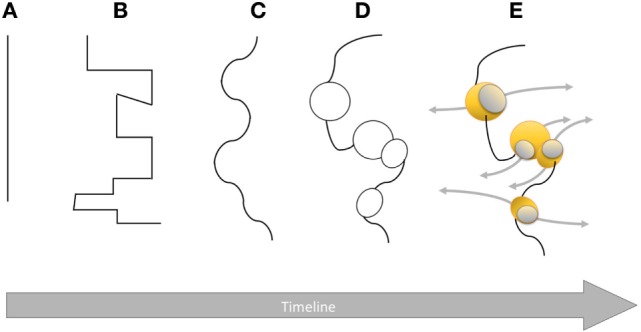Figure 1.

Graphical representation of the boundary between innate and adaptive immune systems over time from Metchnikoff’s era to modern immunology. The plain line in (A) highlights a clear dichotomy with no connections between the two systems. Then, the line becomes broken (B) and sinuous (C) evidencing opposite forces from both sides based on scientific breakthroughs. Once researchers have come to a mutually agreed standby point, equilibrium is reached. As more scientific data are available, connections between innate and adaptive systems (D) become obvious with areas of similarities or convergence represented by black circles (e.g., complement). This convoluted boundary is not definitive yet as it becomes more permeable (E) allowing, in some specific places (yellow spheres), communication (gray arrows) between innate and adaptive immune systems (e.g., memory NK cells, cytokines) introducing more flexibility and complexity.
